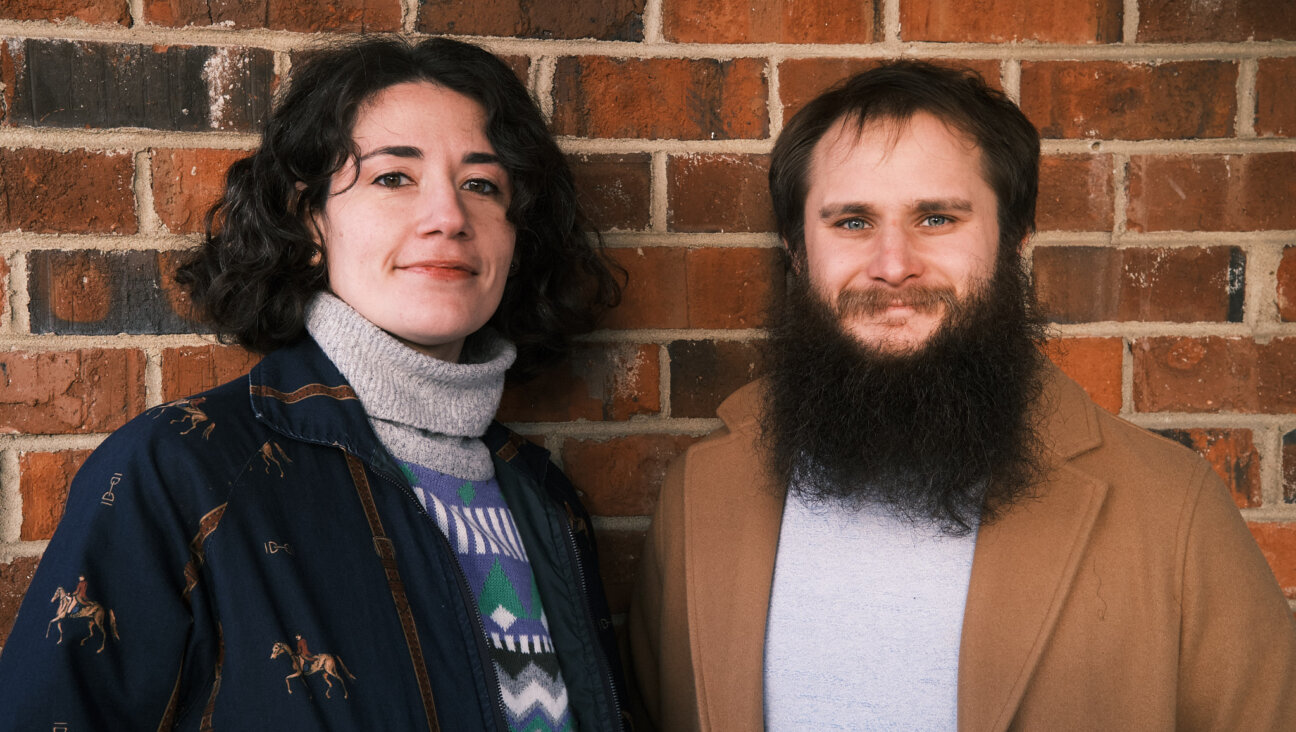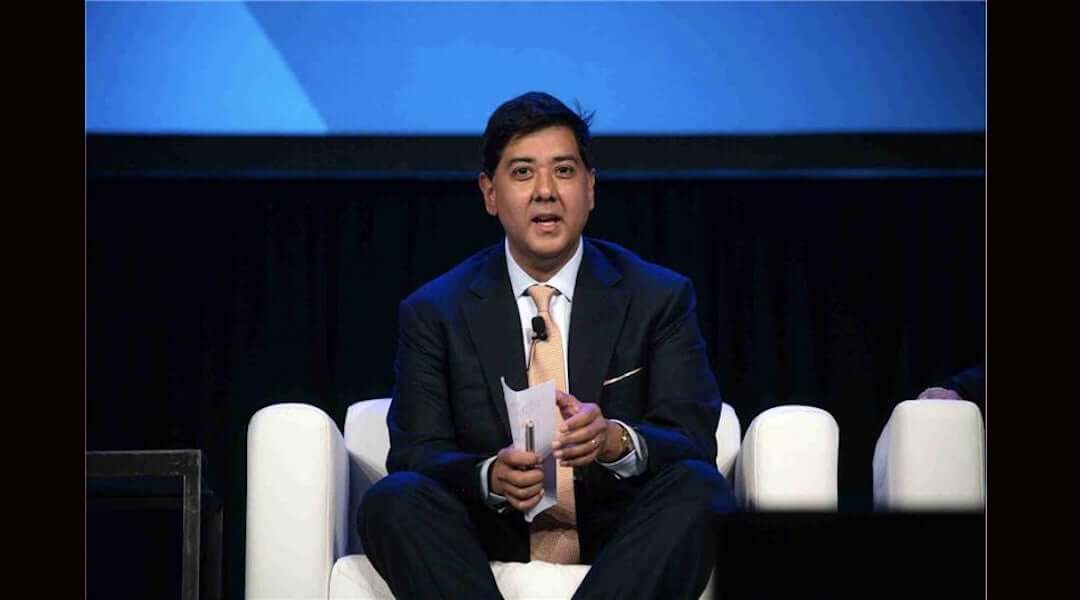In Alaska, a Real-life ‘Northern Exposure’
In this central Alaskan city 10 miles north of a town called North Pole and nearly 400 miles from the nearest rabbi, it now appears that Jewish men will occupy two of the five local seats in the state legislature.
Last month, Jay Ramras won his hotly contested Republican primary for a seat in Alaska’s 10th district. Because Ramras’s district is dominated by the army base at Fort Wainwright, the Republican rarely faces much of a challenge in November. Ramras will likely join Democrat David Guttenberg, who has represented the eighth district since 2002.
From a distance, this might appear to be just another case study of Jews achieving beyond their numbers; by the last, and only, count, there are but 500 Jews in this city of 51,000. A little time in Fairbanks, however, shows a community that is not playing to Jewish stereotypes.
There is Ramras himself, who is known around town as “Jaybird” because of the commercial spots he did for his chicken-wing restaurant. Guttenberg’s first career, on the other hand, was as a union construction worker. These politicians are but two in a cast of unusual characters who make this community run by a logic of its own.
The lone Jewish congregation in the area, which counts both Guttenberg and Ramras as members, occupies a two-family duplex on the outskirts of town. According to community lore, Or HaTzafon (the Light of the North, in Hebrew) is the northernmost synagogue in the world, beating one in Finland by just a few latitudinal seconds.
On a recent Friday night, the road to the Reform-affiliated synagogue was dusty from all the traffic making its way to the nearby Tanana Valley State Fair. Ramras pulled up late to services in his pickup truck, a campaign poster riding in the bed. After a long day of campaigning on median strips, Ramras still managed to stick around for the post-service oneg. With the summer sun still burning brightly, the gathering easily stretched on until 10 p.m., and talk turned to the upcoming moose-hunting season.
“Given the choice between moose-hunting and dip-netting [a form of salmon-fishing], we’ll dip-net every time,” said Jennifer Eskridge, the head of the synagogue’s Jewish education program, which currently has about 20 students. “But our freezers are empty.”
Listening on was the congregation’s president, David Crowson, who led the service. A soft-spoken man who wears his red hair in a long ponytail, Crowson, 33, converted to Judaism 10 years ago. After being raised in town by a Southern Baptist family, Crowson discovered his new religion at a Sabbath dinner during his studies at the University of Alaska at Fairbanks.
The toughest part of the conversion process was finding three rabbis to form a beit din, or rabbinical court, to finalize the conversion. The Chabad-Lubavitch emissary, who lives 400 miles to the south in Anchorage, is the only permanent rabbi living in the state. During the summers, Fairbanks has a student rabbi; but the rest of the year, Crowson and several other members lead services. On this Friday night, congregants had been expecting a rabbi who was vacationing in Alaska, but as Crowson told the 20 or so people who showed up for service: “She’s been weathered in on Kodiak for the last three days.”
The congregation is talking about putting together money to fund a permanent rabbi, but even without a rabbi, Or HaTzafon’s resources are more than Dan Ramras, Jay’s father, ever could have dreamed of when he made it up to Fairbanks from Brooklyn, N.Y., in 1947. In those days, the military was the only game in town, and Jewish activity was restricted to occasional service led by the Jewish chaplain from Anchorage. Jay Ramras, who is now 40, remembers praying under an enormous cross in the church on base when he was young.
After the military presence had dwindled enough for the Jewish chaplain to vacate his post, the Jews in town banded together to form Or HaTzafon in 1980. During the early years, the telephone number for the congregation listed in the phone book rang through to Dan Ramras’s electrical supply store, which also stocked Hanukkah and yahrzeit candles. When the elder Ramras retired, the members of the congregation decided it was time for a building. With a big financial push from the younger Ramras — who made his fortune from a restaurant empire in town — Or HaTzafon bought its current building in the summer of 1992.
Jay Ramras is one of few Jews who was born and raised in Fairbanks. In the starched blue shirt and dress slacks he was wearing Friday, he looked a little out of place among the beat-up polo shirts and Carhartt work clothes that are de rigueur among Alaskans. But he has the conservative politics of a real Alaskan. “They’re all a bunch of Democrats in this room,” Ramras said of the others, half pityingly.
According to the only existing demographic study of Alaskan Jews, done by Brandeis professor Bernard Reisman in 1995, only 6% of the almost 3,000 Jews in Alaska were born in the state. The typical (and not entirely misleading) image of the Alaskan Jew comes from Joel Fleischman, the young Jewish doctor and main character on the television show “Northern Exposure,” who was stationed in the small arctic town of Cicely.
Like Fleischman, many Jews in Alaska did not come seeking or even wanting a religious community; Alaska is, after all, a place to escape tradition and history. One Jew who never went to services was Mike Brock. Brock (this reporter’s cousin) came to Alaska from his native Buffalo, N.Y., in the early 1970s, when the Alaskan oil pipeline had Fairbanks booming. When a section of the pipeline fell on Brock’s legs — requiring a double amputation — he used his worker’s compensation to buy the Howling Dog Saloon, a rough-and-tumble roadhouse bar in neighboring Fox, which he ran until he passed away a few years ago.
It is men like Brock who gave this frontier town its spirit, and there are a fair number of other rough-hewn Jews in the area. But for Fairbanks, the Jewish community has a disproportionate number of graduate degrees. This might explain the high number of political leaders who come from Or HaTzafon. Ramras is the latest, after his primary race, which he won, 803 votes to 639. The congregation also counts as members a state judge, a district judge, a U.S. circuit court judge and countless professors at the university. They build on a history of Alaskan Jewish leaders that includes one of the state’s first senators, Ernest Gruening.
The influence that Jews in Fairbanks have does not ease the difficulties of practicing Judaism here. There is the issue of the three-hours of daylight the town receives in the winter, which makes keeping the Sabbath a difficult task. A few Orthodox folks have made it to Fairbanks in the past, but none lasted long.
There is also the problem of finding a Jewish spouse. A few years back, Ramras made headlines when he toured the lower 48 states in an eventually aborted effort to find a Jewish wife. (He does not talk about the ordeal anymore.)
Eskridge tells her Hebrew school students, and her own two daughters, “I’m not talking about only dating Jewish boys. I’m talking about including Jewish boys in the repertoire.” Eskridge divorced her own Jewish husband after arriving in Fairbanks, but has found a new love in Crowson. The wedding of Fairbanks’s new Jewish power couple is planned for this fall. It will, she said, be “Fairbanks casual: Carhartts or sequins, as you choose.”














